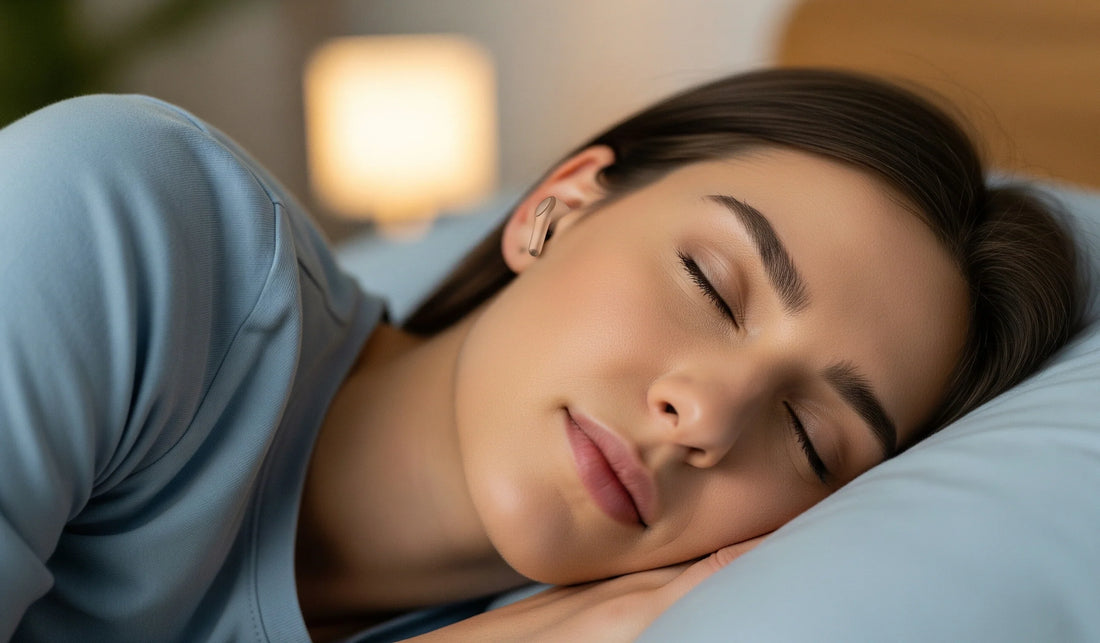
ASMR Earbuds and Sleep: a Sound Night's Rest?
Share
Are ASMR earbuds safe to wear while sleeping?
Yes, with precautions, ASMR earbuds can be safe for sleeping when used properly with appropriate volume levels, comfortable materials, and regular ear care practices.
The gentle whispers, soft tapping, and soothing sounds of ASMR have become a bedtime ritual for millions seeking better sleep. For those seeking to immerse themselves fully in these calming soundscapes, earbuds offer a personal and often more effective experience than relying on external speakers. But with anything worn during sleep, safety is a valid concern, a crucial question emerges about the safety of wearing earbuds throughout the night.
Understanding the Risks and Rewards
Sleep-time audio listening presents unique challenges that differ from daytime use. Your ears, like the rest of your body, need time to recover and breathe. When earbuds create a sealed environment for hours, several concerns arise including moisture buildup, pressure points, and potential hearing damage from prolonged exposure.
However, the benefits of ASMR for sleep quality are well-documented. The targeted audio delivery that earbuds provide can create an intimate soundscape that blocks external noise while delivering those precise tingles and relaxation triggers that make ASMR so effective.
The Golden Rule: Volume Control
The most critical safety factor is maintaining proper volume levels. Audio should never exceed 60 decibels – roughly equivalent to normal conversation volume. At this level, even extended listening poses minimal risk to your hearing health. Many ASMR creators specifically design their content with this limitation in mind, using gentle dynamics that work beautifully at low volumes.
Most smartphones and audio devices include volume limit settings that can help enforce this boundary automatically. Consider this feature your sleep guardian, ensuring that even if you unconsciously adjust volume during the night, you'll stay within safe parameters.
Material Matters: Choosing Comfort
The physical design of your sleep audio setup plays a crucial role in safety and comfort. Soft silicone tips conform gently to your ear canal without creating uncomfortable pressure points that could lead to soreness or irritation. Memory foam options offer even greater adaptability, molding to your unique ear shape while maintaining a secure but gentle fit.
Hard plastic components or oversized designs can create pressure points that become increasingly uncomfortable as you spend hours lying on your side. This discomfort isn't just annoying – it can actually disrupt the very sleep you're trying to improve.
Side Sleeper Solutions
For those who prefer sleeping on their side, specialized low-profile designs make all the difference. These earbuds feature flattened or minimal exterior components that won't dig into your ear when pressed against a pillow. The side-sleeper models specifically engineered for comfortable nighttime use, recognizing that traditional earbud shapes simply weren't designed for horizontal comfort.
The key is finding options that maintain audio quality while disappearing physically once you're settled into your preferred sleep position.
Ear Health and Maintenance
Regular ear rest is essential for maintaining healthy ear canals. Consider implementing "earbud-free" nights several times per week, allowing your ears to breathe and naturally clear any accumulated moisture or debris. This practice helps prevent earwax buildup, which can occur when earbuds are used nightly for extended periods.
Keep your earbuds clean with gentle alcohol wipes, focusing on the tips and any areas that contact your skin. Replace silicone or foam tips regularly – they're the first line of defense against bacteria and the most likely component to harbor buildup.
Creating Your Safe Sleep Routine
Start by testing your setup during short daytime naps to identify any comfort issues before committing to full nights. Pay attention to how your ears feel upon waking – any soreness, fullness, or irritation suggests adjustments are needed.
Consider using a sleep timer feature to automatically stop audio after you've fallen asleep, reducing total exposure time while still providing the ASMR benefits when you need them most.
The intersection of technology and sleep wellness continues evolving, but with mindful practices, ASMR earbuds can safely enhance your nightly rest routine.
